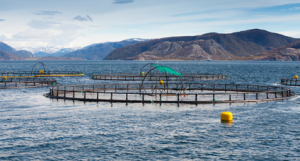Special Report: Update on the MOLTRAQ project

Norwegian Veterinary Institute
The project’s focus has been to collect virus isolates from several different host-pathogen systems across Europe, utilise them to increase knowledge on transmission, prevention and control of viral diseases in aquaculture, and develop a generic approach to viral disease control.
The uniqueness of the MOLTRAQ project is that the focus is on identifying generic properties of viral aquatic pathogens. This can be achieved because the joint project group has a large collection of different virus isolates sampled from many different species of fish and molluscs in many different countries over a considerable timespan.
The background for this is the compromised efficiency of preventive interventions, which are a result of control strategies for diseases in aquaculture that have been designed based on general knowledge of biosecurity and that only to a very limited degree take into account disease-specific transmission patterns, since understanding of these is poor.
An overview of achievements
Essential to the project has been the access to high quality data on samples of representative isolates belonging to various fish and shellfish viruses, including part and whole genome sequences together with epidemiological data. This has allowed for phylogenetic comparisons of differences and similarities between virus isolates over a wide timespan and geographical range. Specifically, the intraspecific phylogeny and evolution of one of the most serious aquatic viral diseases, viral haemorrhagic septicaemia (VHS), on a European base has been elucidated. The genetic diversity of the oyster herpesvirus that has ravaged the Pacific oyster industry has also been disentangled.
The web-based platform www.fishpathogens.eu has been extended with a database on betanodaviruses, and one on salmonid alphavirus is also being implemented under the project. This ensures worldwide access for professionals and researchers within the field of aquatic viruses to quality-controlled collections of molecular and epidemiological data on virus specimens.
Molecular tracing of outbreaks of VHS, infectious haematopoietic necrosis virus and betanodaviruses has been performed, and manuscripts for publication of the findings are currently under preparation. A model that has been successfully used to trace outbreaks of infectious salmon anaemia virus in Norway to infections with the low-pathogenic variant HPR0 has been adapted to trace the sources of outbreaks of VHS in Denmark, thus demonstrating that the model can be used on several different host-pathogen systems.
In order to gain knowledge into the factors that control viral spread at the molecular level, the project has been investigating the effect of temperature on viral expression for the carp virus cyprinid herpesvirus-3. For this, high-throughput next-generation sequencing of viral genomes from virus isolates collected at different temperatures has been performed, thus using this method for identifying potential virulence factors.
Finally, a stochastic model using spatiotemporal data on infected and non-infected populations of Atlantic salmon in Norway, simulating the spread of pancreas disease, has been developed. This model is now being used to investigate the economic consequences of using screening for viruses to forecast disease outbreaks and perform co-ordinated early harvests to avoid outbreaks in defined zones.
Project details
All project results were presented at a stakeholder meeting in Montpellier, France on 27 January 2015, where project partners were also the hosts and teachers at a workshop on how to use molecular tracing for diseases in aquaculture.
MOLTRAQ is a research project funded by the EMIDA-ERA Net under the EU’s Seventh Framework Programme. The project began on 1 April 2012 and will run until 31 March 2015. The total budget is €1.9m, of which €1.4m is funded via the EMIDA ERA-Net.
Project partners include the Norwegian Veterinary Institute (NO), National Veterinary Institute –Technical University of Denmark (DK), Agence Nationale de Sécurité Sanitaire (FR), Institut Francais de Recherche pour Léxploitation de la Mer (FR), Institut de Recherche pour le Développement (FR), Friedrich-Loeffler Institut (DE) and the Norwegian Computing Centre (NO).
You can read more and follow the MOLTRAQ project at www.moltraq.wordpress.com
Britt Bang Jensen
Senior Researcher/Project Leader
Section of Epidemiology
Norwegian Veterinary Institute
tel: +47 23 21 63 60
[email protected]
www.vetinst.no/eng/Norwegian-Veterinary-Institute
